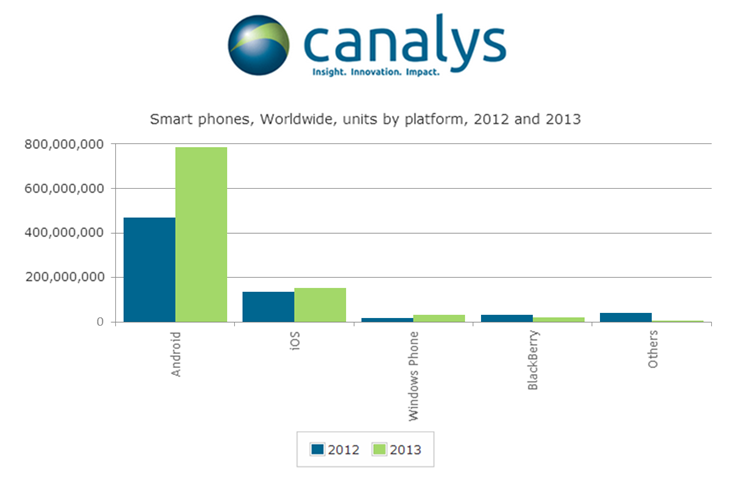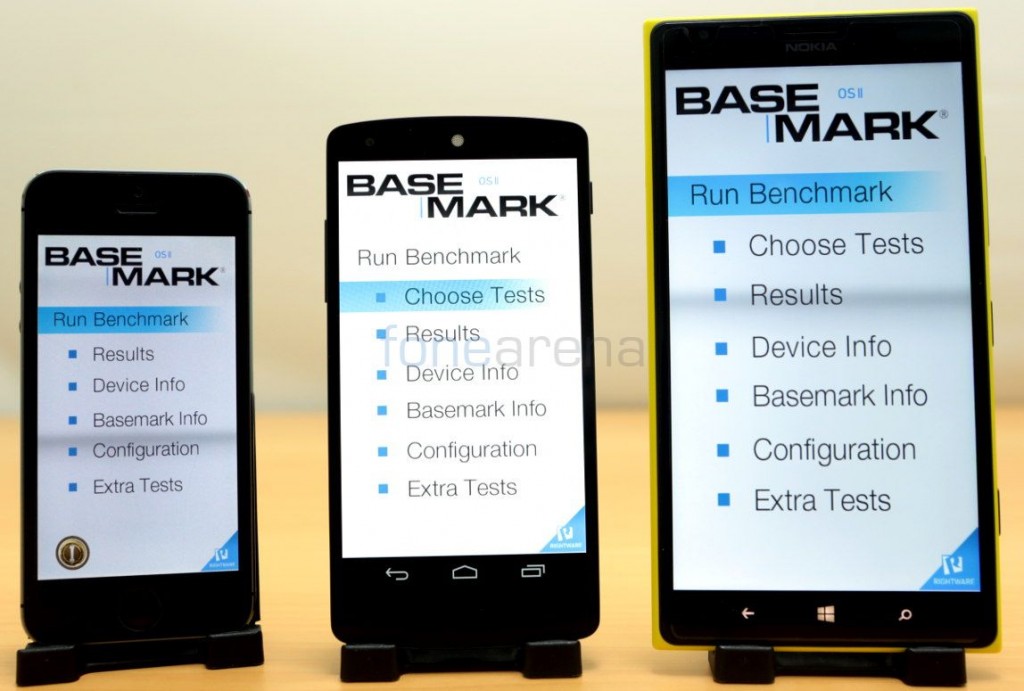It’s the numbers season, with various analysis groups releasing their take on the smartphone market for the whole year of 2013. We saw the IDC report recently that the Smartphone market has crossed the 1 billion threshold. In that lineup, we have Canalys reporting that Android dominated 2013 with almost 80% of that whole Smartphone market in 2013, and amongst them, Windows Phone posted the fastest growth, with a 69% rise YoY between the three major platforms. Both Android’s meteoric rise to the top and Windows Phone’s slow rise from the bottom are pretty much known quantities now, but some of the numbers are interesting. The second biggest platform, Apple’s iOS, has almost stagnated with only 7% growth by losing marketshare, whereas Android is steadily growing at 54%, a good 10% above the market growth percentage. This technically means that Android will reach its maximum in about 2 or 3 years if it and the market retains the growth pattern. Yes, it can happen only at the expense of gobbling up other platform’s shares but it begs this question. Will we we start to see saturation in the Smartphone market soon?
Canalys reports that OS-wise shipments are a whopping 785 million for Android, 154 million iPhones and a measly 32.1 million Windows Phones, only helped by Nokia’s success. With 1 billion smartphones in the globe shipped just for an year, the install base gets remarkably huge, and will keep growing. But until when?
Consider this theory. Apple’s iOS, Google’s Android and Microsoft’s Windows Phone are pretty much established as the major Smartphone platforms now. There are no viable competitors to steal marketshare, as BlackBerry is poised to exist alongside the biggies as a niche and up starts are no where close to being desirable lately. Android has pretty much become the Windows of the smartphone world, and Apple, the Mac. Apple can never achieve the market share scale of Android with two devices per cycle, and they know it. That leaves us with Microsoft’s platform that has posted a 69% growth YoY thanks to Nokia. The Espoo company had a portfolio to sell, and the multiple device strategy for different price points worked in its favour.
Now that it has been acquired by Microsoft, we might possibly see the portfolio consolidated to three or four devices, and there are no indications of other OEMs lining up to produce Windows Phone, which may change over the next few months, but if it doesn’t and Microsoft’s devices don’t grab marketshare from Apple or Google, the market will pretty much saturate, as people’s purchase cycles slow down. More than 35% of the still growing feature phone market is ripe for taking, but even then, we can give the whole market 5-7 years from now. What will be the next disruption that changes the landscape once again? Our bet is on the wearables like smartwatches, but what is yours? Let us know what you think in the comments section below. For more numbers on the Smartphone market, check the source link below.
Source Canalys


